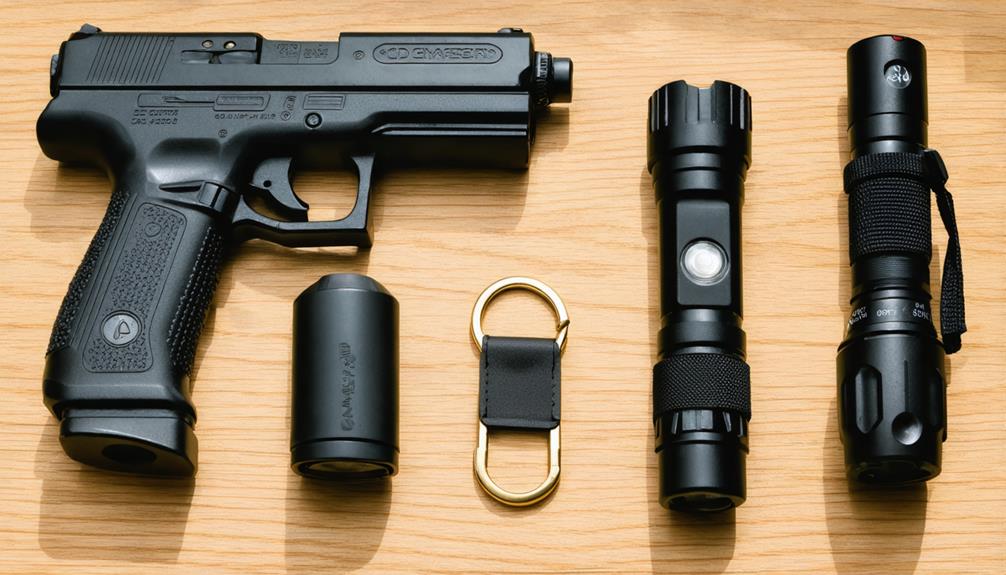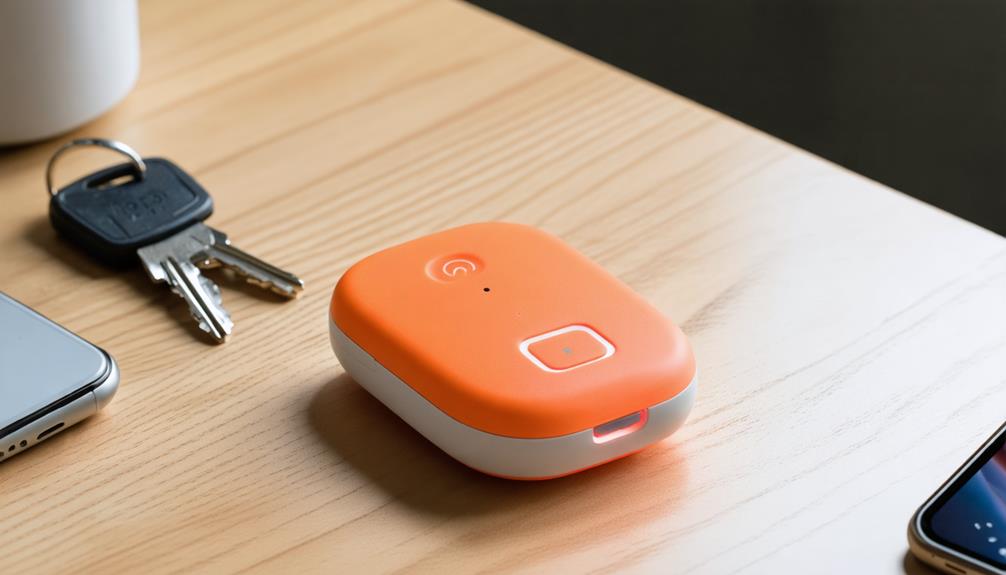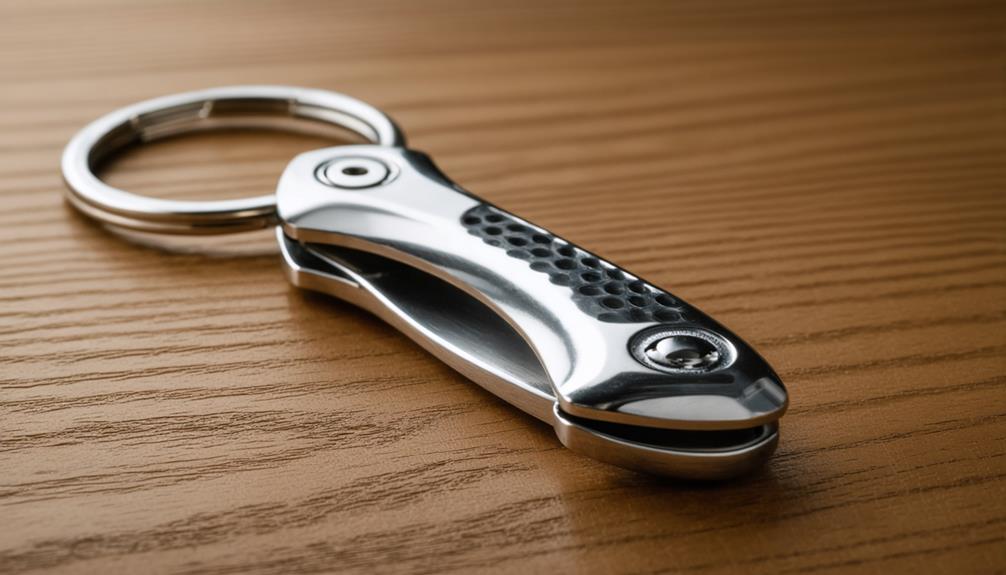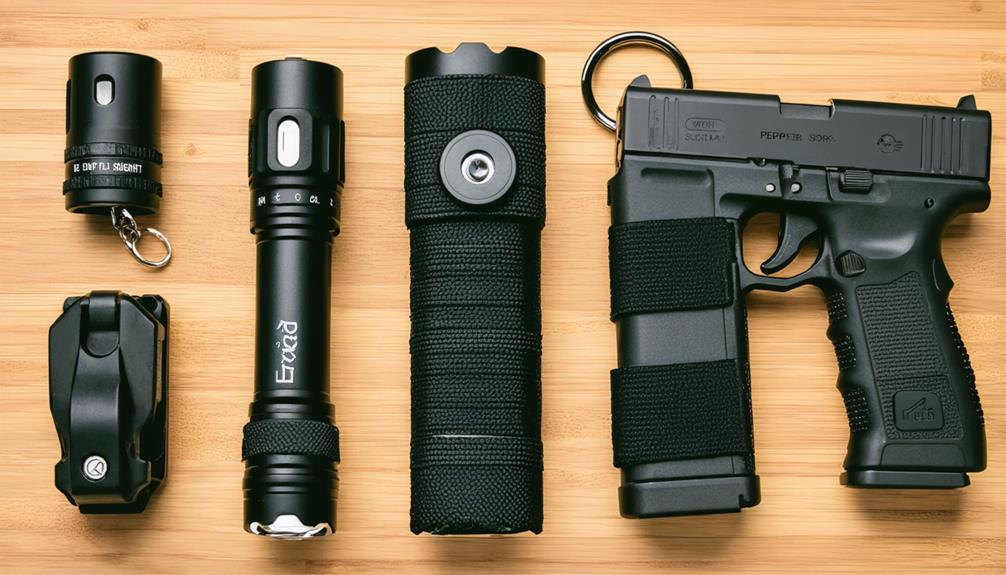
Brainstorm Security Shop

For Orders Over $99

On Any Of Our Products

Details On Refund Page

In an increasingly unpredictable world, the importance of personal defense equipment cannot be overstated. From the simplicity of a tactical pen to the more advanced technology of stun guns and personal alarms, these tools offer a means to enhance safety and confidence. However, choosing the right equipment is not merely a matter of preference but a careful consideration of various factors including legal constraints, personal comfort, and efficacy in real-world scenarios. As we explore the intricacies of these options, one must ponder: what role does personal defense equipment play in shaping our approach to personal safety?
Pepper spray is a widely recognized personal defense tool, valued for its effectiveness and ease of use. It is an essential item for individuals seeking a non-lethal means of protection against potential threats. Understanding the various pepper spray types and their specific applications can enhance user confidence and safety.
The primary types include stream, cone, and gel formulations. Stream pepper spray is known for its targeted delivery, making it less susceptible to wind interference, while cone spray covers a broader area, increasing the likelihood of contact with the assailant. Gel pepper spray, meanwhile, offers a precise application with minimal risk of blowback, making it ideal for indoor use.
Proper pepper spray usage is crucial for maximizing its defensive benefits. Users should familiarize themselves with the operational mechanics of their chosen spray type, ensuring they can deploy it quickly and accurately in high-stress situations. Regular practice with inert training units can build proficiency and confidence.
Furthermore, awareness of local laws and regulations governing the possession and use of pepper spray can prevent legal complications. Ultimately, pepper spray serves as a reliable component of personal defense strategies, providing individuals a sense of security and empowerment.
While pepper spray offers a non-lethal means of protection, stun guns and Tasers provide an alternative through the use of electrical energy to incapacitate potential threats.
These devices are designed to deliver a high-voltage shock, causing temporary muscle disruption and immobilizing the attacker. Understanding the intricacies of stun gun effectiveness and taser safety is crucial for individuals considering these devices for personal defense.
1. Stun Gun Effectiveness: Stun guns rely on direct contact to transmit electrical charges.
Their effectiveness depends on factors such as voltage, duration, and the target area. High-voltage models typically deliver a more incapacitating shock, but their impact can vary based on these factors.
2. Taser Safety: Tasers, unlike stun guns, use projectile probes to deliver electrical currents.
This allows the user to maintain a safe distance from the threat. Proper use and understanding of taser safety are essential to prevent accidental injury to both the user and the target.
3. Legal Considerations: The legality of stun guns and Tasers varies by region.
Prospective users should familiarize themselves with local laws to ensure compliance and avoid legal repercussions.
Incorporating stun guns and Tasers into personal defense strategies can enhance safety when used correctly and responsibly.

Personal alarms serve as a simple yet effective tool for personal safety, providing an audible deterrent to potential threats. These devices are designed to emit a loud, attention-grabbing sound that can dissuade attackers and alert nearby individuals to a distress situation. The primary function of personal alarms is to create a sense of security for users by leveraging auditory surprise against aggressors.
There are various alarm types available, each tailored to specific needs and preferences. Some of the most common types include keychain alarms, wearable alarms, and flashlight alarms. Keychain alarms are compact and easily attach to personal belongings, ensuring accessibility.
Wearable alarms can be discreetly worn as accessories, such as bracelets or pendants, integrating seamlessly into daily attire. Flashlight alarms combine lighting with sound, offering dual functionality for enhanced safety.
Activation methods for personal alarms are generally straightforward, designed to be quickly and easily employed in high-stress situations. Pull-pin activation is a prevalent method, requiring a simple tug to sound the alarm. Button-press activation is another popular option, ideal for those seeking immediate response.
These mechanisms ensure that users can confidently rely on their personal alarms when rapid action is essential.
Tactical pens are uniquely designed tools that seamlessly integrate multifunctional features, serving both as writing instruments and personal defense devices.
Their compact size and discreet appearance make them an ideal choice for everyday carry, offering practicality without compromising personal safety.
Innovative engineering defines the multifunctional design features of tactical pens, transforming them into versatile tools beyond their primary function as writing instruments.
These pens stand out due to their ability to seamlessly integrate a range of practical and protective features that cater to various needs. A key aspect of these pens is their ergonomic grips, which ensure comfortable handling and precise control, allowing users to write effortlessly while also being prepared for unexpected situations.
Tactical pens often incorporate integrated lighting, providing a convenient solution for low-light conditions. This feature enables users to illuminate their surroundings, making it easier to navigate in the dark or read critical information without drawing unnecessary attention.
The compact nature of tactical pens makes them a valuable addition to any personal defense toolkit, offering both functionality and discretion.
To highlight the multifunctionality of tactical pens, consider the following features:
These features exemplify the innovative craftsmanship that distinguishes tactical pens from traditional writing instruments.
For those prioritizing preparedness, the integration of tactical pens into everyday carry (EDC) routines offers significant advantages. These versatile tools are designed not only for writing but also for enhancing situational awareness and facilitating risk assessment in everyday environments. Tactical pens, typically constructed from durable materials such as aircraft-grade aluminum, serve as both a practical writing instrument and a discreet self-defense tool. Their compact size and inconspicuous design make them an ideal addition to any EDC kit without drawing unwanted attention.
By incorporating a tactical pen into one’s routine, individuals can better prepare for unforeseen circumstances. Below is a breakdown of the key benefits associated with carrying a tactical pen:
| Feature | Benefit | Application |
|---|---|---|
| Durability | Long-lasting, reliable use | Everyday writing and emergencies |
| Discreet Design | Avoids attention | Suitable for all environments |
| Multifunctionality | Writing, self-defense, glass breaker | Enhances situational awareness |
| Portability | Easy to carry | Seamless integration into EDC |
| Cost-effectiveness | Affordable | Accessible defense solution |
In self-defense scenarios, tactical pens frequently serve as practical and effective tools.
These unassuming items provide a unique blend of functionality and security, often overlooked in conventional self-defense strategies. Tactical pens are designed for both writing and as a means of self-protection, making them an ideal choice for those mindful of situational awareness. Their discreet nature allows them to be easily carried, enhancing personal security without drawing unwanted attention.
Here are three key benefits of using a tactical pen for self-defense:

Keychain defense tools present a practical blend of compactness and portability, making them an ideal option for everyday carry.
However, it is crucial to be aware of the legal considerations and restrictions associated with these tools, which can vary significantly by jurisdiction.
Furthermore, many of these tools are designed to serve multiple functions, enhancing their utility beyond personal defense.
Among the myriad of personal defense tools available today, compact and portable options such as keychain defense tools are gaining significant popularity for their convenience and effectiveness.
These tools are designed to be discreet and easily accessible, making them an excellent addition to anyone’s self defense training and emergency preparedness plan. Keychain defense tools offer a range of functionalities while remaining non-intrusive in everyday life.
Here are three compelling reasons to consider keychain defense tools:
Incorporating keychain defense tools into one’s daily routine can significantly enhance personal safety and readiness for unforeseen situations.
While keychain defense tools offer numerous benefits for personal safety, it is important to understand the legal landscape surrounding their use. Self-defense laws vary significantly across jurisdictions, impacting how such tools can be legally carried and utilized. In some areas, keychain tools may be classified as weapons, which subjects them to specific regulations and restrictions. Understanding these weapon classifications is crucial for ensuring compliance with local laws.
The table below highlights the legal considerations in different regions:
| Region | Self Defense Laws | Weapon Classifications |
|---|---|---|
| United States | Varies by state; some permit concealed carry of non-lethal tools | Some states classify as weapons if they cause harm |
| United Kingdom | Strict regulations; self-defense recognized but tools often restricted | Keychain tools often classified as offensive weapons |
| Australia | Strict self-defense laws; limits on carrying personal defense tools | Many keychain tools classified under prohibited weapons |
Navigating the legal framework requires not only awareness but also proactive steps to ensure lawful use. It is advisable to consult local regulations and, if necessary, legal professionals to understand the limitations and allowances within one’s jurisdiction. By doing so, individuals can confidently carry keychain defense tools, maximizing personal safety while adhering to the law. Understanding the nuances of self-defense laws and weapon classifications is essential for all users.
Compact yet versatile, multi-functional keychain tools have become increasingly popular for personal defense. These tools offer a practical solution for those seeking to enhance their everyday carry items with discreet yet effective options.
Keychain tools are designed to serve multiple functions, combining utility with accessibility, and often require no specialized training to use.
Keychain customization allows individuals to tailor their tools to specific needs and preferences. Whether you prioritize self-defense, utility, or a combination of both, these tools can be adapted to suit your lifestyle.
Here are three key features that make multi-functional keychain tools appealing:
Ultimately, multi-functional keychain tools offer a balance of practicality and personal defense, making them an essential addition to any modern everyday carry collection.
Navigating the legal landscape of personal defense equipment requires a thorough understanding of various regulations that can vary significantly by jurisdiction. Self defense laws are designed to ensure individuals can protect themselves while maintaining public safety. However, these laws can differ greatly, affecting the types of permissible weapons available for personal defense. For instance, some jurisdictions may allow pepper spray and stun guns, while others impose restrictions or outright bans on such items. Understanding these differences is critical to ensuring compliance and avoiding legal repercussions.
To illustrate the variance in regulations, consider the table below:
| Jurisdiction | Permissible Weapons |
|---|---|
| California | Pepper spray (restricted size), |
| stun guns, batons (with permit) | |
| Texas | Pepper spray, stun guns, |
| firearms (with permit) | |
| New York | Limited to pepper spray (with |
| restrictions), no stun guns | |
| Florida | Pepper spray, stun guns, |
| firearms (with permit) | |
| Illinois | Stun guns (with restrictions), |
| pepper spray |
This table highlights the importance of researching local laws before acquiring personal defense equipment. It is essential to stay informed about any legislative changes that may impact the legality of specific self defense tools. Being knowledgeable about these regulations can help individuals make informed decisions while ensuring they remain within the boundaries of the law.

Selecting the appropriate personal defense equipment is a critical decision that requires careful consideration of several factors. These elements ensure that the chosen tools not only align with your self defense mindset but also serve their intended purpose effectively.
Key considerations include:
Adopting a self defense mindset includes being aware of these factors and conducting regular practice to maintain readiness.
The right choice of equipment, coupled with routine equipment maintenance, empowers individuals to confidently protect themselves in various situations. Thus, evaluating these aspects meticulously aids in the acquisition of effective personal defense tools.
Proper maintenance involves regular cleaning techniques and systematic equipment inspections. Cleaning ensures functionality and longevity, while inspections identify potential issues. Adhering to manufacturer guidelines guarantees that all components remain in optimal condition and ready for use.
Optimal storage solutions ensure equipment accessibility and longevity. Implement climate-controlled environments to prevent degradation, and organize tools for quick retrieval. Regularly inspect and maintain storage conditions to uphold functionality and readiness of your essential equipment.
When considering child-friendly options and elderly safety, it is essential to select tools that prioritize ease of use and minimal risk. Products designed with ergonomic features and intuitive operation are ideal for vulnerable populations like children and elderly individuals.
To practice safely at home, start with self-defense techniques under professional guidance. Gradually incorporate equipment training, ensuring all tools are used correctly to prevent injury. Prioritize a controlled environment and adhere to safety protocols consistently.
Recent technological advancements highlight smart weapons and non-lethal options. Smart weapons incorporate biometric authentication, ensuring authorized use. Non-lethal options include advanced stun devices and pepper sprays with enhanced accuracy, providing effective defense while minimizing the risk of severe injury.
The selection of personal defense equipment requires careful consideration of individual needs, lifestyle, and legal constraints. Each tool, whether pepper spray, stun guns, personal alarms, tactical pens, or keychain defense devices, offers distinct features suited for various scenarios. Understanding local regulations is paramount to ensure lawful possession and use. Ultimately, the ideal choice balances ease of use with the ability to maintain readiness and confidence, empowering individuals to effectively safeguard personal safety in diverse situations.
Brainstorm Security Shop
1867 Caravan Trail
Ste 105
Jacksonville, FL 32216
Call us toll free: (800) 859-5566